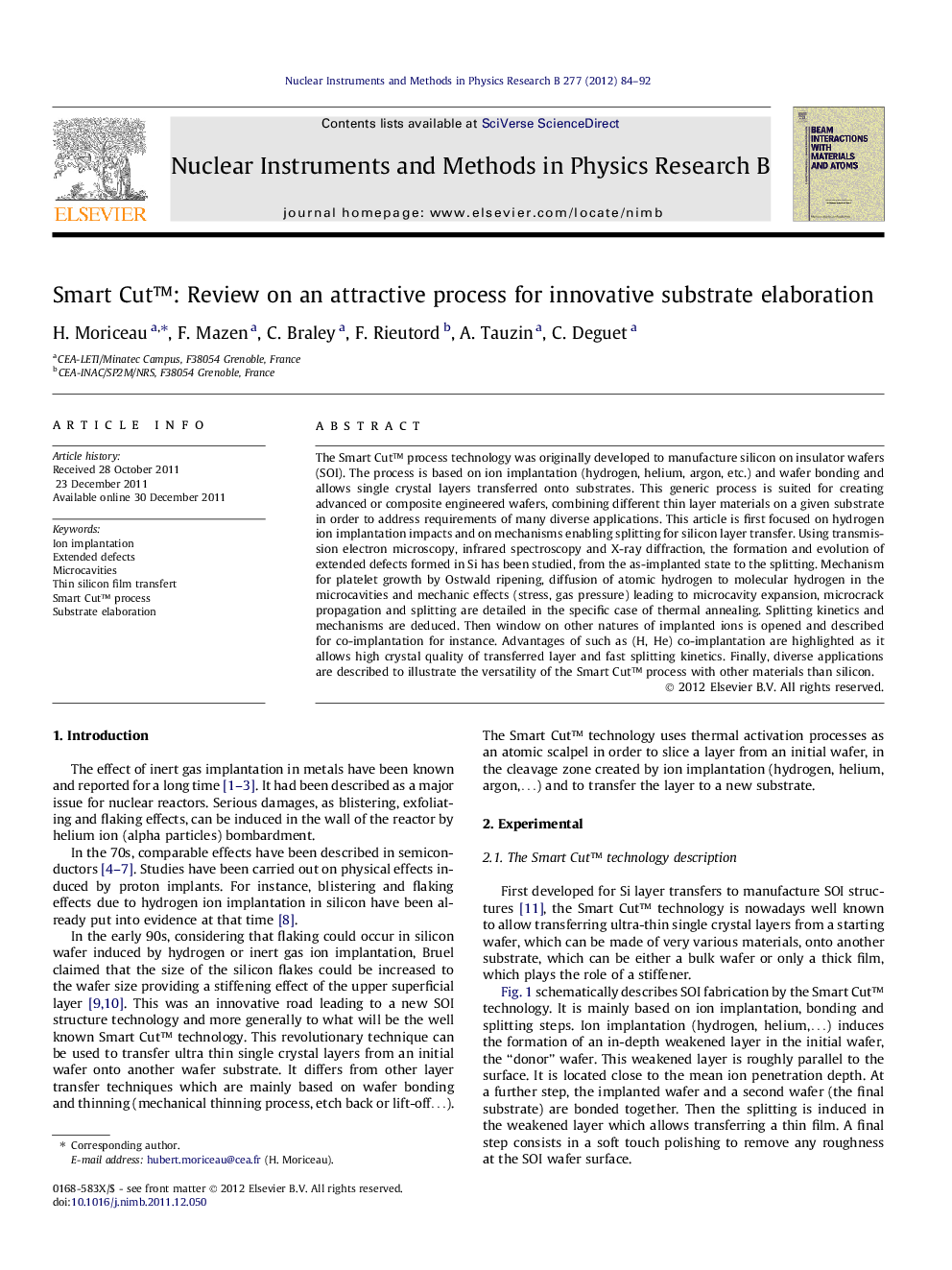| Article ID | Journal | Published Year | Pages | File Type |
|---|---|---|---|---|
| 8043898 | Nuclear Instruments and Methods in Physics Research Section B: Beam Interactions with Materials and Atoms | 2012 | 9 Pages |
Abstract
The Smart Cut⢠process technology was originally developed to manufacture silicon on insulator wafers (SOI). The process is based on ion implantation (hydrogen, helium, argon, etc.) and wafer bonding and allows single crystal layers transferred onto substrates. This generic process is suited for creating advanced or composite engineered wafers, combining different thin layer materials on a given substrate in order to address requirements of many diverse applications. This article is first focused on hydrogen ion implantation impacts and on mechanisms enabling splitting for silicon layer transfer. Using transmission electron microscopy, infrared spectroscopy and X-ray diffraction, the formation and evolution of extended defects formed in Si has been studied, from the as-implanted state to the splitting. Mechanism for platelet growth by Ostwald ripening, diffusion of atomic hydrogen to molecular hydrogen in the microcavities and mechanic effects (stress, gas pressure) leading to microcavity expansion, microcrack propagation and splitting are detailed in the specific case of thermal annealing. Splitting kinetics and mechanisms are deduced. Then window on other natures of implanted ions is opened and described for co-implantation for instance. Advantages of such as (H, He) co-implantation are highlighted as it allows high crystal quality of transferred layer and fast splitting kinetics. Finally, diverse applications are described to illustrate the versatility of the Smart Cut⢠process with other materials than silicon.
Related Topics
Physical Sciences and Engineering
Materials Science
Surfaces, Coatings and Films
Authors
H. Moriceau, F. Mazen, C. Braley, F. Rieutord, A. Tauzin, C. Deguet,
